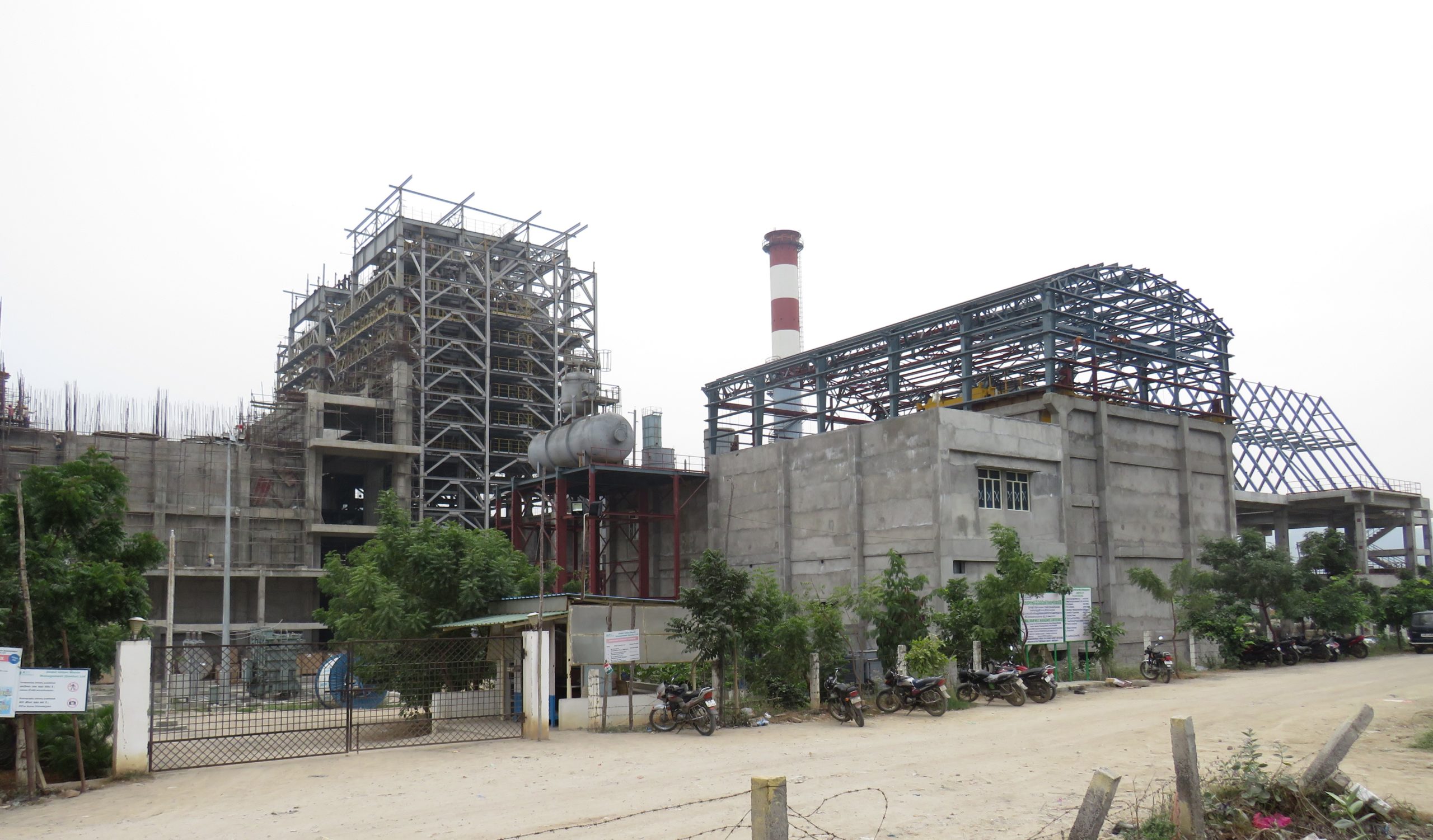
Jindal ITF Urban Infrastructure Limited (JUIL) is one of India’s biggest companies offering solid waste management services that cover the entire cycle of waste collection, disposal, treatment and Waste-to-Energy (WtE) generation. Jindal Ecopolis is credited with establishing India’s first commercial large-scale WtE plant in Okhla Timarpur, New Delhi which processes approximately 2,000 TPD of Municipal Solid Waste (MSW), generating 20 MW of electrical power per day.
As two of their major WtE projects in Andhra Pradesh near completion – one in Guntur and another in Vishakhapatnam – we caught up with Mr M V Chary, President (Andhra Pradesh Projects), Jindal Urban Waste Management (Guntur) Limited.

1. What is the status of the Guntur and Vishakhapatnam WtE projects? When will they start operations?
The Guntur WtE plant was delayed due to issues related to land allotment, registration, etc. Actual work on building the plant was started in January 2018 and the civil work is now 90 per cent complete, mechanical is about 40 per cent complete while electrical work is 30 per cent complete. We will start operations in April 2020.
The Vishakhapatnam plant will be ready three months after the Guntur projects is completed.
2. What is the capacity of the two WtE plants?
The Guntur and Vishakhapatnam WtE plants can each handle 1200 tonnes of waste per day but their design capacity is up to 1600 tonnes. They will each generate 15 MW power. The agreement will be valid for 25 years.
3. How much waste do you expect will be coming to these two plants every day?
In Guntur, nine Urban Local Bodies (ULBs) including two municipal corporations (Guntur and Vijayawada) and seven municipalities will be sending garbage to our plant. The total collection of these nine ULBs is 1220 tonnes per day. In Vishakhapatnam, we expect 1200 tonnes of garbage per day.
4. Is there a gate fee at both plants?
There is no gate fee. It is the responsibility of all the ULBs to deliver the garbage at our doorstep free of cost.
5. How much tariff will you receive?
We will be getting Rs 6.20 for every unit of electricity generated.
6. What technology is being used in the Guntur and Vishakhapatnam projects?
Similar to the Okhla Timarpur WtE plant, we will be doing mass incineration of waste with a little pre-segregation at Guntur and Vishakhapatnam. The technologies in all our major WtE, including Okhla, are the same. At Jindal, we always use the latest technology. For the Andhra projects, the boilers and stoker used for combustion system are being imported from China.
7. Jindal’s Okhla plant is one of the few functional WtE plants in India, unlike so many others that seem to have frequent technical problems and are shut for maintenance. Why?
The main reason for the success of Jindal’s WtE projects is their cost. Mass incineration projects have a very high per Mega Watt (MW) cost – around 20 crores / MW. Smaller companies don’t want to spend money and select wrong or inferior technology leading to plant failures. In Okhla, we started the project in 2012 at the cost of 18 crores / MW. Hence that plant is still running successfully.
8. Given your vast experience in the Indian WtE sector, do you think the government is recognizing the importance of WtE as a sustainable solid waste management option?
Unfortunately, no. The government does not realize the potential of WtE. Lenders too don’t support it and lending rates are low because they are not commercially viable. Even the Guntur project is not viable at Rs 6. Our per unit generation cost is about Rs 7.50. If the government gives good tariffs like Rs 7.80 – 8, these plants will succeed. You must recognize these are no ordinary plants and require massive investment in terms of machinery, boilers, combustion systems etc. We are also handling low calorific waste which is very corrosive in nature.
9. Have you raised your concerns with the government?
Recently, the Andhra Pradesh State-level Expert Committee for Protection of Environment Chairperson Mr T Chatterjee visited the Guntur project. He has responded very positively and asked me to submit the exact unit generation cost so that he can speak to the government for the revision of power purchasing agreement.
The government does not realize the potential of WtE. Lenders too don’t support it and lending rates are low because they are not commercially viable. Even the Guntur project is not viable…
M V Chary, President, Andhra Pradesh Projects, Jindal Urban Waste Management (Guntur) Limited
10. The fact remains that WtE projects haven’t been very successful in India unlike China, Japan and many other Asian countries. Why?
The reason why WtE projects run successfully in countries like China is because companies receive full support from electricity companies. They receive a tariff of INR 6/MW. Also, the garbage is delivered free of cost to the plants and for every ton of garbage that companies burn, they earn a tipping fee. If you combine the tariff and the tipping fee, the total per unit revenue generated is INR 10. The government also gives free land and water-supply. Plus, handling of the slag/water-mash is not the company’s headache – a truck will come and collect the ash, which is converted into some useful material.
However, in India, developers get low tariffs and are required to maintain the bottom ash and scientific landfill themselves. The bank’s lending rates are also low, and land is not free. These are the constraints that WtE companies face in India and hence they don’t come forward easily. Despite initiatives like Swacch Bharat, I feel we have frankly not achieved much in the SWM sector.

11. Mass incineration at large-scale WtE projects like your own, is very expensive. In India, Refuse Derived Fuel (RDF) and composting thus seem to be more popular. What are your thoughts?
Many people think that simple segregation is RDF. This is incorrect. There are 4 to 5 grades of RDF. The cost per tonne is more than Rs 7000 – even costlier than coal. Also, the material handling system is a big nuisance because there is no technology to make segregation automated. Manual interference is inevitable and inhuman because municipal solid waste (MSW) contains so much infection.
RDF collected from MSW often lies untouched. Cement plant don’t want it because it is so heterogeneous in nature and the calorific value fluctuates. Since RDF is light in weight, transportation costs are also very high.
I don’t even advocate composting. There are many quality issues related with the compost generated from MSW. Also, composting is also not space efficient. Farmers do not want purchase it.
12. You are clearly a strong advocate of mass waste incineration…
If you want to avoid garbage dumps, mass incineration is the best technology. Other new methods like pyrolysis, gasification and plasma technology but are not commercially viable and not successful on a large scale. In most Western countries as well as Japan and China, mass incineration is the preferred technology. In China, there are 400 WtE plants in operation and another 300 are under construction. I have seen a WtE plant in Shanghai which handles garbage of 5,000 tons per day. In Beijing, garbage collection is 24,000 tonnes per day. They have four plants, each with a capacity of 5000 tonnes. The plants are located in remote areas. If you see them, they don’t look like mass incineration plants, rather they look like five-star hotels since they are built so nicely. Singapore, where land availability is limited, has four incineration plants in operation.
India needs more than 400 mass incineration plants. The only caveat is these projects should be properly implemented.
13. There is a lot of public opposition to WtE plants across the country. How do you respond to critics who say that these plants are polluting and unviable?
First, a WtE plant it is totally sealed. Locals do not see the garbage nor smell anything. Also, WtE plants are a much better than open dumping. If people can bear open dumps, then what is wrong with WtE plants? Frankly, most people still don’t fully understand what solid waste management entails. That’s why we are lagging behind other countries in managing our waste problem.
Picture credit: Jindal ITF Urban Infrastructure Limited (JUIL)
This interview is part of a special series showcasing important stakeholders in India’s solid waste management sector. Watch this space for more in-depth conversations, views and analysis.



